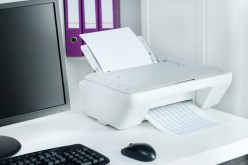A Beginner’s Guide to Installing a Manual Transfer Switch: What You Need to Know
Installing a manual transfer switch (MTS) is an essential step for anyone looking to connect a generator to their home’s electrical system safely. Whether you’re preparing for unexpected power outages or creating a reliable backup power source, understanding how to install an MTS can empower you as a homeowner. This guide will walk you through the vital information you need before embarking on this project.
Understanding Manual Transfer Switches
A manual transfer switch is an electrical device that allows you to safely switch between your utility power and generator power. When the grid goes down, it enables you to run your essential appliances without back-feeding electricity into the main lines, which could be dangerous for utility workers trying to restore power. An MTS typically consists of a series of breakers that control which circuits in your home can receive power from the generator.
Choosing the Right Manual Transfer Switch
Selecting the right MTS depends on several factors including your generator’s wattage output and what appliances you want to run during an outage. It’s crucial first to calculate the total wattage of all devices that will be powered simultaneously. MTS units come in various configurations; some allow only specific circuits (like refrigerator or furnace circuits), while others can handle more extensive setups with multiple circuit options. Always consult with a professional if you’re unsure about your needs or choices.
Installation Process: Step-by-Step Guide
Before installation begins, ensure compliance with local codes and regulations, as this varies by region. Start by turning off all main breakers and ensuring no current is flowing through your electrical system. Next, mount the manual transfer switch near your main electrical panel following manufacturer instructions for wiring connections. Connect wires from both your generator and designated circuits inside your home into the transfer switch using proper gauge wire suitable for handling load capacities without overheating.
Safety Tips and Final Considerations
Safety should always be paramount when working with electricity. It is highly recommended that homeowners hire certified electricians unless they possess adequate knowledge of electrical systems and local codes themselves. Additionally, informing others about installed generators during outages can prevent accidents related to back-feeding electricity onto utility lines—this precaution protects both workers and surrounding homes from potential hazards.
Installing a manual transfer switch may seem daunting at first; however, it provides peace of mind knowing that you’ve taken steps towards safeguarding your home against unexpected blackouts effectively. With careful planning, proper installation procedures followed by safety precautions adhered too diligently—you’ll have reliable backup power at your fingertips whenever needed.
This text was generated using a large language model, and select text has been reviewed and moderated for purposes such as readability.






